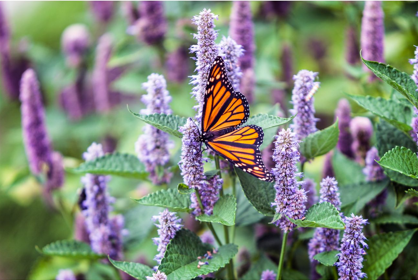Pollinator Gardens
Planting a Pollinator Garden: Support Nature, one Flower at a Time
Pollinators like bees, butterflies, hummingbirds, and even some beetles are vital to a healthy ecosystem. Without them, much of the food we enjoy—and many of the beautiful flowers we love—would simply not exist. One of the easiest and most rewarding ways to support pollinator populations is by planting a pollinator garden.
🌿 Why Pollinator Gardens Matter
Pollinators play a critical role in fertilizing flowering plants, helping them produce fruit, seeds, and new plants. But due to habitat loss, pesticide use, and climate change, pollinator populations have declined dramatically in recent years.
Creating a pollinator-friendly garden helps:
🐝 Support biodiversity
🌎 Promote a balanced, thriving ecosystem
🌸 Boost the productivity of fruit and vegetable gardens
💧 Encourage water-wise, resilient planting
🌼 What to Plant in a Pollinator Garden
A successful pollinator garden offers continuous blooms from early spring through fall. Choose nectar- and pollen-rich plants that attract bees, butterflies, hummingbirds—and even moths. In Victoria’s temperate coastal climate, many ornamental varieties like agastache, cuphea, salvia, and lavender provide excellent support for pollinators while adding vibrant colour and texture to your garden.
🌸 Pollinator-Friendly Garden Plants
Agastache (e.g. ‘Blue Fortune’, ‘Kudos’ series) – loved by bees and hummingbirds
Cuphea (‘Vermillionaire’) – hummingbird favourite
Salvia (‘Black and Blue’, ‘Hot Lips’) – blooms all season, attracts bees and hummers
Lavender – excellent for bees, long-blooming and drought-tolerant
Echinacea – pollinators love it, and birds enjoy the seed heads
Lantana – great for butterflies
Verbena bonariensis – tall, airy blooms that butterflies flock to
Nepeta (Catmint) – long bloom time and adored by bees
🌿 Shrubs & Small Trees Pollinators Love
Spiraea japonica (e.g., ‘Goldflame’, ‘Magic Carpet’) – blooms in summer, loved by bees
Buddleia (Butterfly Bush) – classic choice for butterflies (choose sterile or compact varieties)
Deutzia (e.g., Yuki Cherry Blossom) – spring blooms, bee-friendly, compact
Weigela (‘Sonic Bloom’ series) – tubular blooms that hummingbirds love
Hydrangea paniculata – open flower structure attracts pollinators
Caryopteris (Bluebeard) – late summer bloomer, excellent for bees
Lavatera (Tree Mallow) – long bloom time, great for bees and hummingbirds
Crabapple (Malus spp.) – spring flowers for bees, fruit for birds
Flowering Dogwood (Cornus florida or kousa) – spring blooms, wildlife value
Japanese Snowbell (Styrax japonicus) – delicate summer flowers, good for pollinators
Smoke Bush (Cotinus coggygria) – dramatic foliage, subtle pollinator benefits
Lilac (Syringa vulgaris) – classic, fragrant, bee magnet in spring
Mix heights, colors, and bloom times to keep your garden attractive and active throughout the seasons.
🌿 Other Key Tips
Avoid pesticides, especially neonaticides. They’re toxic to pollinators—even in small amounts. (At Patio Gardens, we proudly do not use neonaticides.)
Provide water. A shallow dish with pebbles can offer a safe drinking spot.
Add habitat. Leave some bare soil for ground-nesting bees and let a few garden corners stay wild.
Use clusters. Grouping plants together makes them easier for pollinators to find.
🌎 Every Garden Counts
Whether you have a large yard or a few pots on a balcony, you can make a difference. Pollinator gardens don’t just benefit insects—they support a healthier, more vibrant planet for all of us.
Ready to start planting?
Stop by Patio Gardens for pollinator-friendly plants, soil tips, and design advice.
Let’s grow something beautiful—together.

